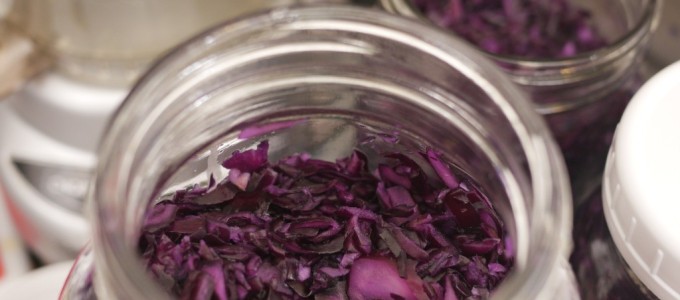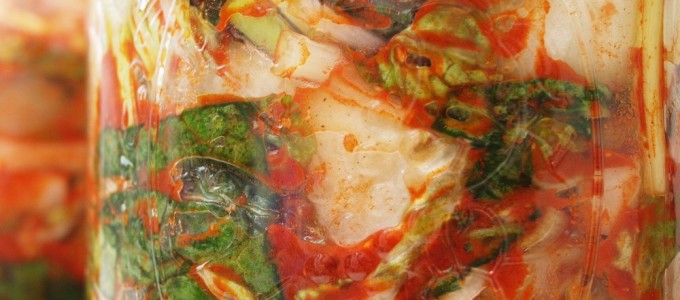One thing you should know about the making of sauerkraut is that it’s important to massage the shredded cabbage. You may pound it with a potato masher or with the end of a French rolling pin. And I always do, to start. But the goal of the exercise is to bruise the brassica bits, and induce them to yield up their water. The goal is to mix cabbage juice with salt, such that the vegetable essentially brines itself. And to accomplish this most effectively, hands are by far the best tool.
As I was making this batch of very purple sauerkraut, there was a moment when Sarah turned to say something to me and found me elbows deep in cabbage. I was moving it around, squeezing handfuls between my fingers, and apparently — says Sarah — singing softly to myself. So struck was she by my display of what she deemed pickling madness that she insisted on taking this photograph of my manual manipulations.


